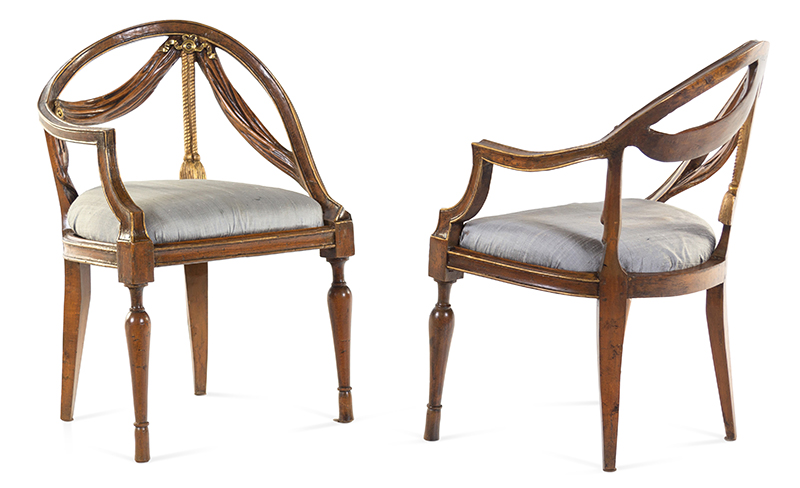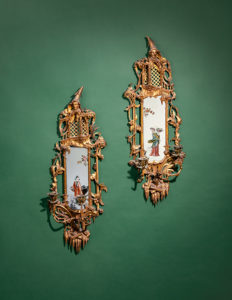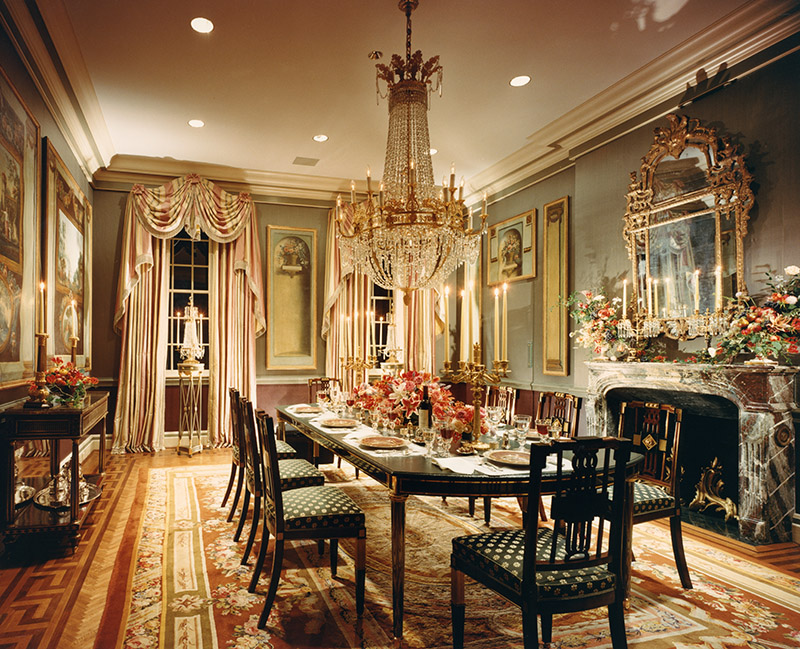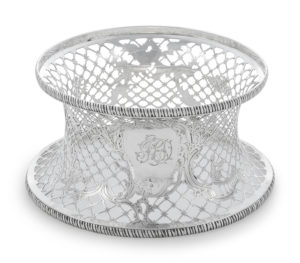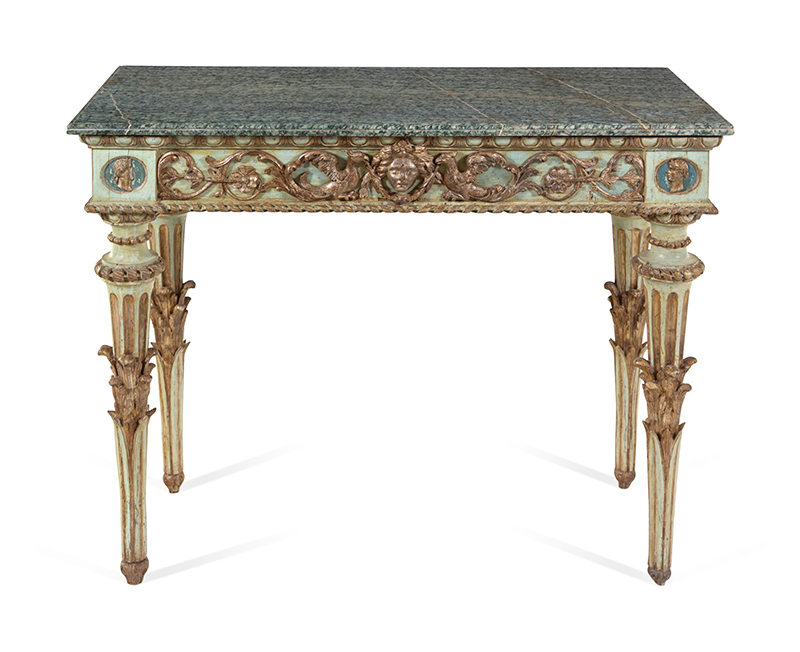Dickens and Decorative Arts: Jay Krehbiel on the Past Year at Hindman
by Taryn Clary
When Jay Krehbiel stepped up to serve as Chief Executive Officer at Hindman Auctions in October 2019, there was no way to predict that the year ahead would hold a global pandemic, economic crisis, and long-lasting changes for the art world. Adapting to the new normal of online-only sales and remote business, Krehbiel has seen the best of times and the worst of times. However, Hindman’s strong sell-through rates and busy auction schedule serve as a testament to the resilience of the market.
Coming up this month is Hindman’s Fine Furniture, Decorative Arts and Silver sale, spread over two days both live and online, for a total of 1,231 lots on offer. In advance of this monumental sale and his one-year anniversary at the helm, Krehbiel spoke with the Decorative Arts Trust to reflect on the state of the art market and the herculean efforts of Hindman to serve their clients.
This interview has been edited and condensed for clarity.
Decorative Arts Trust: How has business at Hindman changed in response to the COVID-19 crisis?
Jay Krehbiel: Everything and nothing has changed. Everything in that we are operating in uncharted waters, the greatest upheaval our industry has seen in modern times. The pace of change feels as if it has gone up by a factor of 10. Uncertainty abounds. The team can barely catch their breath in between pandemic warnings, economic calamity, and one of the busiest sale schedules our firm has ever had (over 100 auctions this year). And yet, nothing, in that our goal, as always, is to bring exceptional objects to sophisticated buyers with passion, respect, and integrity. We have been able to do that, uninterrupted, throughout the pandemic.
DAT: How have Hindman’s clients responded?
JK: If you will allow me to steal from Dickens, it is the tale of two cities. Starting in March, consignors proceeded with appropriate caution—firstly concerned with their safety and well-being, afraid to have anyone into their homes and secondly concerned about the state of the market, questioning whether now was really a good time to sell. Buyers, on the other hand, seem to have pushed on with reckless abandon as they sat at home with nothing else to do but bid. We have seen some of the most competitive and aggressive bidding, from all corners of the world and across all categories, that we have ever witnessed, with no relent as the lockdowns passed. It has sent the clear message back to the consignors that now is an excellent time to sell.
DAT: How would you gauge interest in decorative arts at this time?
JK: As anyone who follows the excellent work of the Decorative Arts Trust knows, the death of “brown furniture” and his various cousins (silver, porcelain, etc.) has been greatly exaggerated. However, I am constantly surprised when you meet learned and exciting collectors, passionate about their subject or field of interest, from around the world and of all ages. Their excitement gives you hope.
Within any collecting category, the best will always be the best and will attract interest from serious buyers. Within the middle market, where we do far more of our business, I have been noticing a wellspring of interest in antiques across a much broader spectrum of buyers. Antiques come with stories. Antiques weave together connections. Antiques are often imperfect and so they have character. They allow the owner to represent themselves. And, of course, antiques are environmentally friendly! We need to do a better job of explaining how to contextualize some of these objects for a new set of buyers.
DAT: Which objects have generated the most excitement from prospective buyers?
JK: I have noticed that the trade is very focused on bringing together antiquities and ancient objects with contemporary art, and so we have seen strong interest in the antiquities that have come to market in our sales, most recently in a very successful sale in June [Hindman’s inaugural Antiquities and Islamic Art auction, which achieved nearly $1 million]. That sale was headlined by property from a number of prominent institutions, including the Detroit Institute of the Arts. Whether you are a collector of antiquities or not, the idea of a terra cotta that is over 2,500 years old or a glass urn and lid which survived from 100 AD is remarkable.
DAT: What are your thoughts on the shift to live-streamed auctions and online bidding?
JK: On this topic, there is a lot of myth and then there is reality. When you talk to long-time members of the auction trade, you invariably are regaled with stories of the crowded sales room—200 or 300 people, packed in together, bidding against each other. The excitement. The buzz. The energy. Thunderous applause when the hammer finally came down. It was a spectacle.
As fun as it might be to reminisce or think back to that time, the truth is that in-person bidding as an event or as a source of most purchases went away a long time ago, across almost every category (for us, Arms, Armor & Militaria would be the exception to that). As such, when we moved our entire operation to a remotely run auction on March 19, we didn’t miss a beat nor did we lose much if any of our buying market. Now, it still took a herculean effort from our amazing team to make it happen in 48 hours, and the cadence of the sale changed considerably —it moved much slower—but the source of the bids was still the same: online and on the phone.
DAT: How have you been able to accommodate the need for clients to see objects in person? Is the challenge of examining objects firsthand impacting particular segments of the market?
JK: Throughout the last six months, we have been accommodating client requests to see an object in person, subject to appropriate health and safety requirements. Naturally, given the travel bans or quarantine requirements in place, what has actually happened is a large increase in requests for additional photographs, sent and returned via email. We have also been doing a large number of virtual appointments where specialists talk through the objects live with potential buyers, which allows them to answer questions in real time. The lack of in person viewing has not deterred buyers in the least.
Over the last decade, we have seen an increasing level of comfort with collectors to purchase without seeing an object first. Year by year, the willingness to buy higher value items online has been increasing. The last six months has just seen a huge leap forward in that willingness, and we do not see that changing or ever going back. We think it will only accelerate. This suggests to me that our clients trust us to consistently deliver.
DAT: How are you reaching out to potential consignors?
JK: Three ways. First, we spend a lot of time working with advisors—appraisal firms, trust and estate lawyers, art advisors—to make certain they know our firm and the depth and breadth of our team and services so that they can recommend us, and they do. Second, of course, we advertise directly to collectors and those thinking of selling across all categories. Third, and most importantly, we work hard to build word of mouth referrals, by achieving great results for clients while acting with honesty and integrity. I would add that a good deal of our business is now coming from long-time clients, who through changing life circumstances are coming to us to market collections we helped them build.
DAT: Do you have a favorite piece in the October 13 Fine Furniture, Decorative Arts and Silver sale?
JK: As I have been told to say by my wife and our marketing department, I love all of my children. There are six lots which caught my attention as I flipped through the draft catalog which just went to press. Lot 5 is a set of ten French painted canvas panels which decorated a dining room designed by Robert Metzger for a Maryland interior. The panels were supplied by Maison Jansen for an earlier interior as yet unidentified; they are real showstoppers hung together like that. Lots 161 and 169 are lovely examples of Italian furniture; the chairs are wonderfully quirky, and as I am married to an Italian, I am drawn to both lots. Lot 269 is a beautiful Russian gold cigarette case. While it is a good thing that a lot of people have given up smoking, I wish people still used these beautiful objects every day. Lot 284 is an 18th-century Irish dish ring, sold by the San Diego Museum of Art, and I always love a nice piece of Irish silver (I put in an absentee bid for myself at $2200, so if you want it, you’ll need to do better than that). Lot 318 is an exceptional pair of 18th-century Chinese Chippendale girandoles with reverse-painted glass mirrors, added later though excellently painted; the carving is really superb, and with a little love and care, they would shine once again in anyone’s collection.
DAT: Do you collect?
JK: My wife and I collect 18th-century Irish pictures. The joy of collecting within the tiniest of niches is the ability to be a serious player with limited resources. My parents are collectors, and my brother and I grew up surrounded by art and antiques. Many a holiday was spent going to galleries and art fairs with my parents, and we watched them buy, got to know the dealers, and interacted with advisors. There was no way to avoid it, I guess.
DAT: You were hired as Hindman’s Chief Executive Officer in October 2019. What are your biggest takeaways from this first year at the helm?
JK: Leslie Hindman and I have been partners in the business for just over three years. Leslie is also my cousin, so much of my life I had been watching the space with keen interest as Leslie successfully grew the business. That said, to step into the CEO’s role in October 2019 has been a trial by fire. The pandemic has challenged our business and our team, and I am really proud of how everyone has risen to the occasion.
As a relative newbie to the industry, I will say that I am surprised by the feast or famine nature of this business. To go back to Dickens, one second it is the best of times and we are riding on top of the world on the back of a hugely successful sale. Then you lose a big consignment that you wanted to get and it is the worst of times. I used to work for a widget company and sometimes I miss the consistency with which those widgets come off the production line!
DAT: In January 2019, Leslie Hindman Auctioneers merged with Cowan’s Auction to form Hindman LLC. In what ways has this consolidation benefited both house’s business?
JK: Bringing Leslie Hindman’s and Wes Cowan’s eponymous auction houses together to form a new firm was, in many ways, a no-brainer. It allowed the combined firm to expand its geographic presence—now with offices and active representation in 12 cities—and expanded the categories of sale and depth of the specialist teams for both firms. Leslie and Wes had long been friends and great admirers of each other, with a shared passion for client service and unimpeachable ethics. They make great business partners, and I am excited to be able to work with both of them.
DAT: Based in Chicago, Hindman now operates more salesrooms in the United States than any other auction house. How important is maintaining this local connection and service to Chicago and the Midwest?
JK: The premise of our business is to be both local and global at the same time. While we are headquartered in Chicago, we are deeply committed to the other markets that we serve, and very much want to be the hometown auction house, be it in Denver, Cincinnati, Atlanta, or Palm Beach. Oftentimes, we have consignors that don’t even know we have an office in Chicago or outside of the city where we are selling. At the same time, through our networks, we connect to buyers all over the world. We looked at the data recently, and on average, we have buyers from over 25 countries in each sale. That global reach is how we achieve excellent results for our local clients.
Tune into the live bidding for Fine Furniture, Decorative Arts and Silver on October 13 at 9:00 am CT!
Read more about antiques and the decorative arts field by browsing the Decorative Arts Trust blog, by signing up for the e-newsletter, and by following the Trust on Facebook and Instagram. The Decorative Arts Trust appreciates the support of members and donors to share stories like this one with interested readers.
About The Decorative Arts Trust Bulletin
Formerly known as the "blog,” the Bulletin features new research and scholarship, travelogues, book reviews, and museum and gallery exhibitions. The Bulletin complements The Magazine of the Decorative Arts Trust, our biannual members publication.









